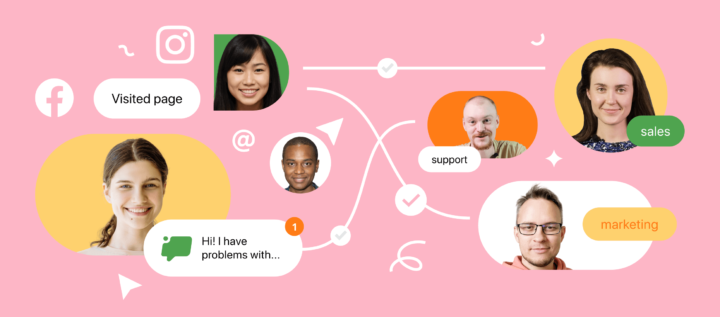Improve customer retention: A step-by-step guide for customer success teams
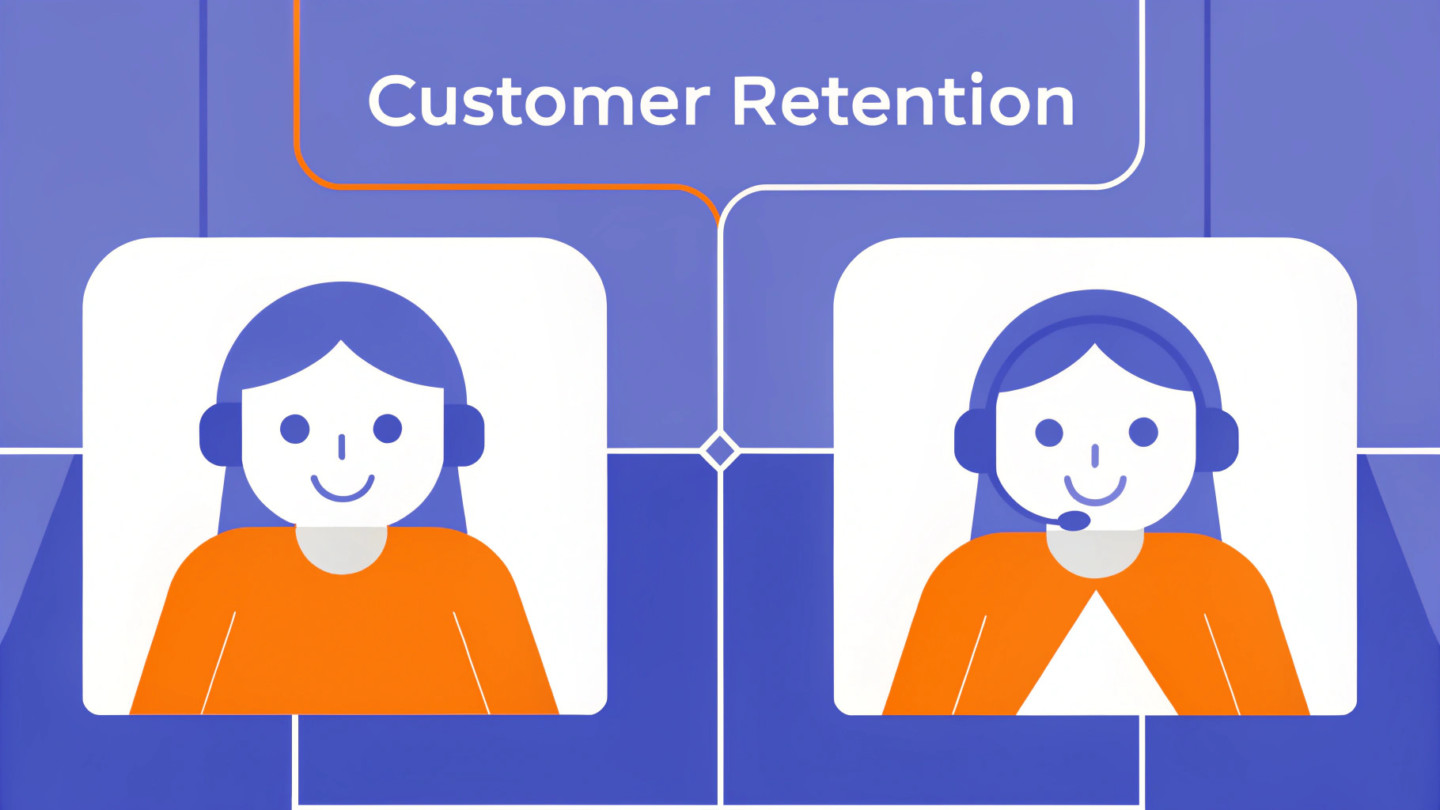
Overview
The article “Improve customer retention: A step-by-step guide for customer success teams” is designed to resonate with the everyday challenges that businesses, especially smaller ones, face. It highlights effective strategies that can be easily implemented to enhance customer retention. By emphasizing:
- Personalized communication
- Rewarding programs
- Exceptional client service
- The integration of technology
the article underscores a supportive approach. Data backs up the assertion that improved retention not only fosters stronger customer relationships but can also lead to significant profitability increases and reduced acquisition costs. You’re not alone in navigating these complexities — this guide aims to empower you with practical solutions that feel manageable and achievable.
Introduction
In today’s competitive marketplace, we understand that retaining customers can feel like an uphill battle for many small business owners. It’s not just about making a sale; it’s about building lasting relationships that enhance profitability and reduce the stress of constantly acquiring new customers. Did you know that even a small boost in customer retention can lead to significant profit gains? This realization has prompted businesses to focus on effective retention strategies that truly resonate with their customers.
From personalized communication and loyalty programs to harnessing technology and gathering customer feedback, there are many avenues to explore. These strategies not only strengthen relationships but also foster a sense of loyalty that can be invaluable. In this article, we’ll delve into the multifaceted nature of customer retention, offering insights into its importance, effective strategies, and the long-term benefits that come from prioritizing customer loyalty. Together, let’s navigate this journey towards a more loyal customer base.
Understanding customer retention: Definition and importance
Client loyalty is more than just a buzzword; it’s about a business’s ability to nurture its clientele over time, fostering repeat purchases and unwavering allegiance. In today’s competitive landscape, we understand how vital it is to focus on retaining customers — after all, it’s often far more cost-effective than constantly seeking new ones. Did you know that even a modest 5% increase in client loyalty can lead to a remarkable 25% to 95% boost in profits? That’s significant!
This section delves into the intricate layers of client loyalty, exploring its profound effects on client lifetime value (CLV) and overall profitability. Understanding these dynamics is essential for businesses eager to enhance their client engagement strategies and secure long-term success. For instance, recent data reveals that the global redemption rate of rewards from loyalty programs reached 49.8% in 2023, underscoring the power of well-structured retention initiatives.
Moreover, it’s important to note that a striking 81% of consumers want to know why conversational AI tools recommend certain purchases. This highlights a growing expectation for transparency in client interactions. As SAP Emarsys points out, ‘53% of respondents are classified as silent loyalists, meaning they remain loyal to brands without actively engaging with them.’ Recognizing these different loyalty dynamics is crucial.
To effectively measure client loyalty, businesses can use the formula:
CRR = (E - N) / S x 100where E represents the total clients at the end of the period, N stands for new clients acquired, and S is the total clients at the start. For example, if you start with 500 clients, acquire 50 new ones, and end with 520, your loyalty rate would be 94%. These insights reinforce the necessity for companies to prioritize customer retention strategies as a strategic imperative. A case study on measuring client loyalty illustrates how to assess loyalty based on client numbers at the beginning and end of a period, along with new client acquisitions.
We get it — running a business is hard. But by focusing on these strategies, you can foster deeper connections with your clients and ensure lasting loyalty.
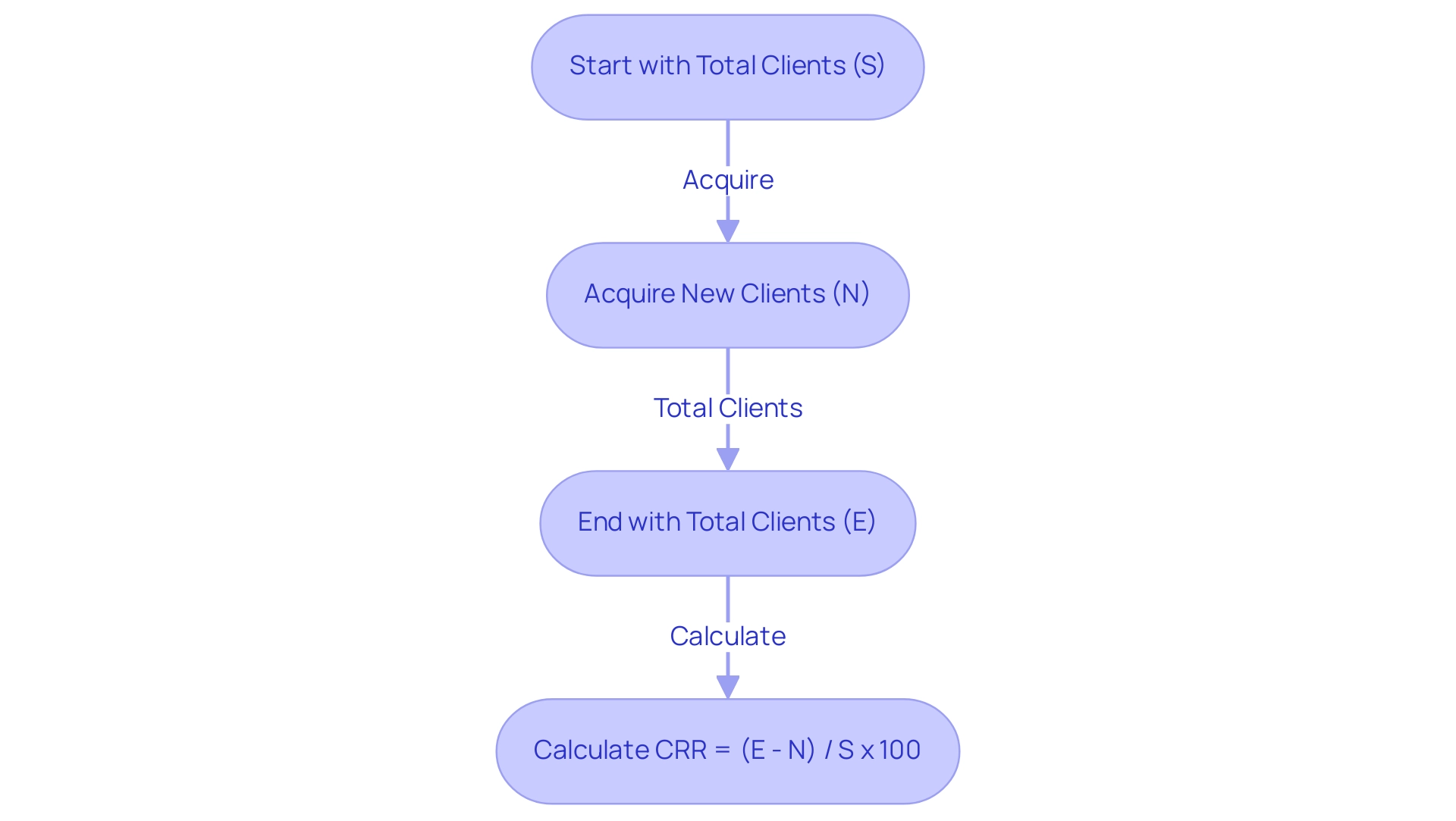
Effective Strategies to Enhance Customer Retention
To improve client retention, companies can adopt several effective strategies that have proven successful in 2025.
Personalized communication: We understand that tailoring messages to meet the specific needs and preferences of clients is crucial. By utilizing data analytics, businesses gain valuable insights into client behavior, enabling them to craft personalized experiences. Did you know that marketers who personalize web experiences can see an average uplift of 19% in sales? Marketing expert Thomas Radavicius highlights that
1 in 3 marketers spend at least half their marketing budgets on personalization, underscoring the critical role of this strategy in modern marketing. A successful example is Sole’s AI-driven recommendations, which have significantly boosted their sales by providing tailored product suggestions based on clients’ browsing history.Reward programs: Creating reward programs that benefit returning clients is an effective method to encourage retention. These programs can offer discounts, exclusive deals, or points redeemable for products or services, creating an enticing incentive for individuals to return. Particularly within SaaS and e-learning sectors, well-structured loyalty programs have demonstrated a remarkable ability to enhance client loyalty and lifetime value.
Exceptional client service: A well-trained support team is essential for addressing inquiries and complaints promptly and effectively. Exceptional service fosters trust and satisfaction, which are vital for improving customer retention. Dashly‘s capabilities in omnichannel communication enhance this experience, allowing support staff to manage interactions seamlessly across platforms. For instance, Dashly’s shared inbox functionality enables support teams to streamline responses and maintain context in conversations, ultimately enhancing client satisfaction.
Regular feedback collection: Actively seeking client feedback through surveys and reviews helps companies understand client needs and preferences. This continuous loop of communication not only aids in improving offerings but also makes clients feel valued, thereby strengthening their loyalty.
Engagement through content: Providing valuable content that resonates with your audience is vital. Regular newsletters, informative blogs, or engaging webinars keep clients connected to your brand, strengthening their relationship with your enterprise. Companies like Sender are leading the way in email campaign personalization with smart segmentation, offering a free plan for 2,500 subscribers and up to 15,000 emails per month, which can significantly enhance engagement and retention.
Omnichannel support: Providing assistance through various channels — such as chat, email, and social media — ensures individuals can easily contact you, enhancing their overall experience. Dashly’s shared inbox functionality exemplifies this by allowing support teams to manage user queries from various platforms in one place.
Proactive communication: Keeping your brand top-of-mind through proactive communication is key. Frequent updates, notifications, or tailored promotions can assist in sustaining engagement and fostering repeated interactions.
By adopting these approaches, organizations can establish a strong foundation to improve customer retention, ultimately resulting in ongoing growth and allegiance.
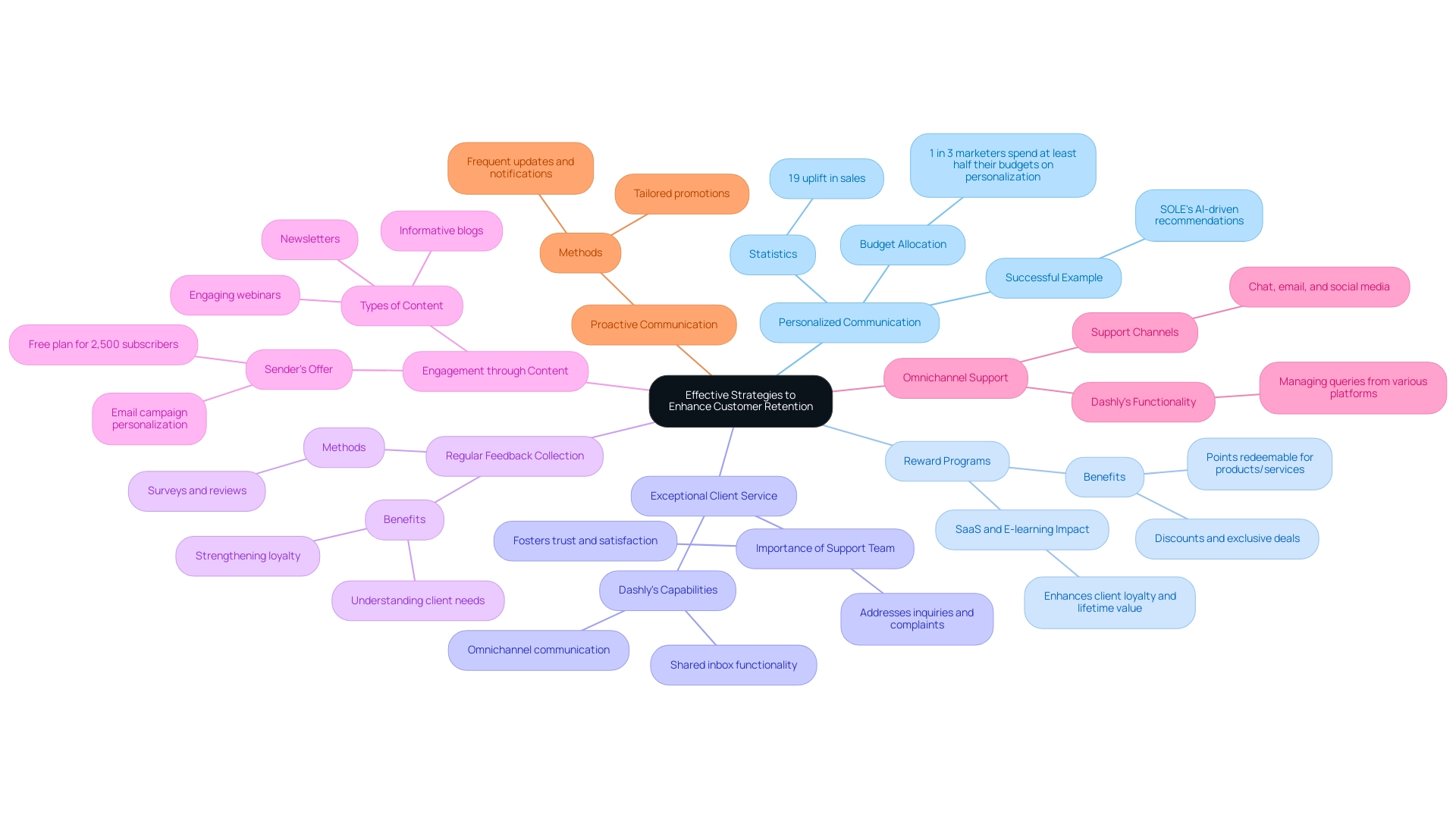
Improve customer retention with support tools from Dashly:
Measuring success: Customer retention metrics and analytics
To effectively measure the success of your customer retention initiatives, it’s essential to focus on several key metrics that shed light on customer behavior and satisfaction — especially when leveraging Dashly‘s AI-driven omnichannel communication and automation solutions.
- Client Retention Rate (CRR): This vital metric reflects the percentage of clients you retain over a specified period. Calculating CRR is straightforward: take the number of clients at the end of a time frame, subtract the new clients acquired during that period, and divide by the number of clients at the beginning. A higher CRR indicates effective strategies to enhance customer retention. Remember, over 50% of clients are likely to switch after just one negative experience. Dashly’s cohesive strategy for handling user inquiries improves retention by ensuring each interaction is tailored to their history and preferences — key for sustaining growth.
- Customer Lifetime Value (CLV): CLV represents the total revenue you can expect from an individual throughout their relationship with your business. Understanding CLV allows you to allocate resources more effectively, focusing on high-value clients to maximize returns on your marketing and loyalty efforts. Dashly’s analytics tools help you examine client interactions cohesively, significantly increasing CLV. It’s noteworthy that businesses improving customer retention rates by just 5% can see profit increases of 25% to 95%, highlighting the financial incentive to prioritize CLV.
- Churn Rate: This metric measures the percentage of users who stop using your product or service within a given timeframe. A high churn rate often signals underlying issues with client satisfaction or perceived product value. By utilizing Dashly’s self-service support options, such as a knowledge base and an AI support bot, you empower clients to resolve issues independently, addressing queries more effectively and ultimately enhancing retention. Companies in the U.S. lose approximately $136.8 billion annually due to preventable churn, underscoring the importance of tackling these challenges.
- Net Promoter Score (NPS): NPS gauges client loyalty by asking how likely individuals are to recommend your business to others. A high NPS reflects strong loyalty and satisfaction, making it a crucial metric for evaluating your strategies. Dashly’s streamlined communication enhances client experiences, potentially improving retention and loyalty. As SAPEmarsys points out, “17.57% of CPG shoppers are motivated by incentives,” which can significantly influence NPS and loyalty efforts.
- Repeat Purchase Rate: This metric tracks the percentage of clients who make multiple purchases, offering insight into loyalty and overall satisfaction. With Dashly’s tools enabling faster and more efficient support through features like saved replies and performance analytics, a high repeat purchase rate indicates that clients find value in their experiences — critical for improving retention.
- Engagement Metrics: Analyzing interactions with your brand — such as email open rates, website visits, and social media engagement — can provide valuable insights into customer interest and satisfaction. Dashly’s extensive analytics offer the information you need to tailor your strategies to meet client requirements.
By focusing on these metrics and utilizing Dashly’s features, including self-service options and an enhanced agent workspace, you can gain a comprehensive understanding of your client engagement success. This knowledge empowers you to make informed decisions that improve customer retention and reduce churn, ultimately leading to better financial outcomes.
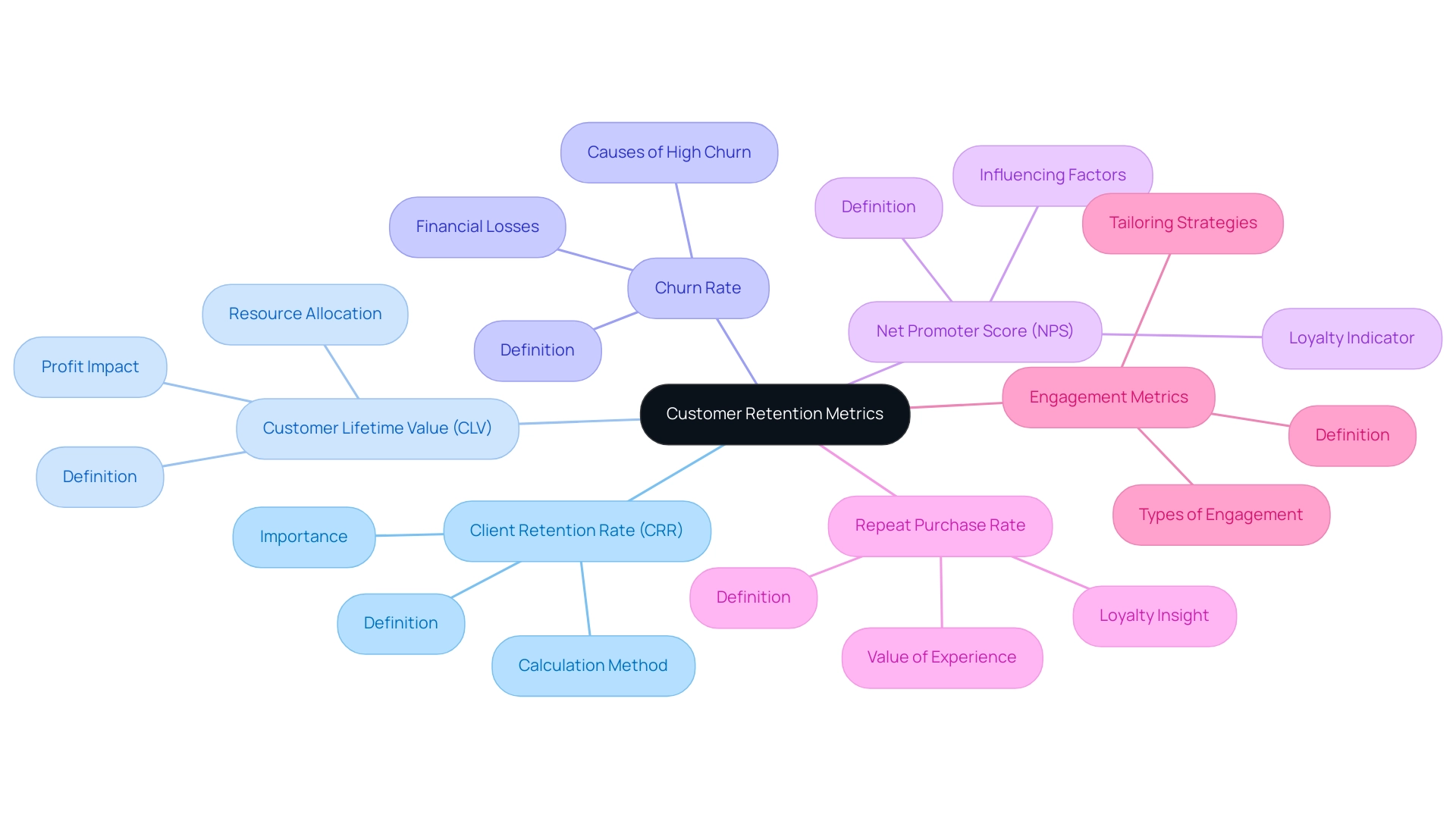
Leveraging customer feedback for improved retention
Harnessing client feedback is essential for improving customer retention strategies, and implementing effective feedback loops can significantly bolster loyalty. We understand that navigating customer needs can be challenging, but here’s how to leverage client feedback effectively:
- Establish feedback loops: Start by creating a structured approach for collecting, analyzing, and acting on client feedback through surveys, focus groups, and direct outreach. This systematic process ensures that client voices are consistently heard and valued.
- Implement changes based on feedback: When you demonstrate that you value client input by making tangible changes, you significantly strengthen their loyalty and trust in your brand. A recent study highlights that organizations investing in enhancing client experience can see an average gain of $775 million over three years.
- Communicate changes: Transparency is crucial — inform clients about the modifications made in response to their feedback. This practice fosters a sense of partnership and encourages ongoing dialogue, creating a culture of collaboration.
- Tailor offerings through personalization: Use feedback to customize your products and marketing communications to align more closely with client preferences. Personalization not only enhances client satisfaction but can also lead to increased spending, as repeat patrons tend to buy more often, according to Damaris Hinga, a Digital Marketing Specialist.
- Engage on social media: Actively monitor social media channels for user comments and reviews. Interacting with clients on these platforms can produce valuable insights and improve loyalty initiatives. Considering that 67% of consumers turn to rivals right after a negative experience, understanding and addressing concerns swiftly is essential for keeping customers.
By establishing effective feedback loops and reacting to customer insights, companies can foster loyalty and improve customer retention. Organizations prioritizing customer-centric strategies report 51% better loyalty than those that do not, underlining the powerful impact of a customer-obsessed culture. Furthermore, measuring retention through metrics like Customer Retention Rate (CRR) allows businesses to assess their performance and identify areas for improvement, ensuring they remain competitive in a fast-paced market.
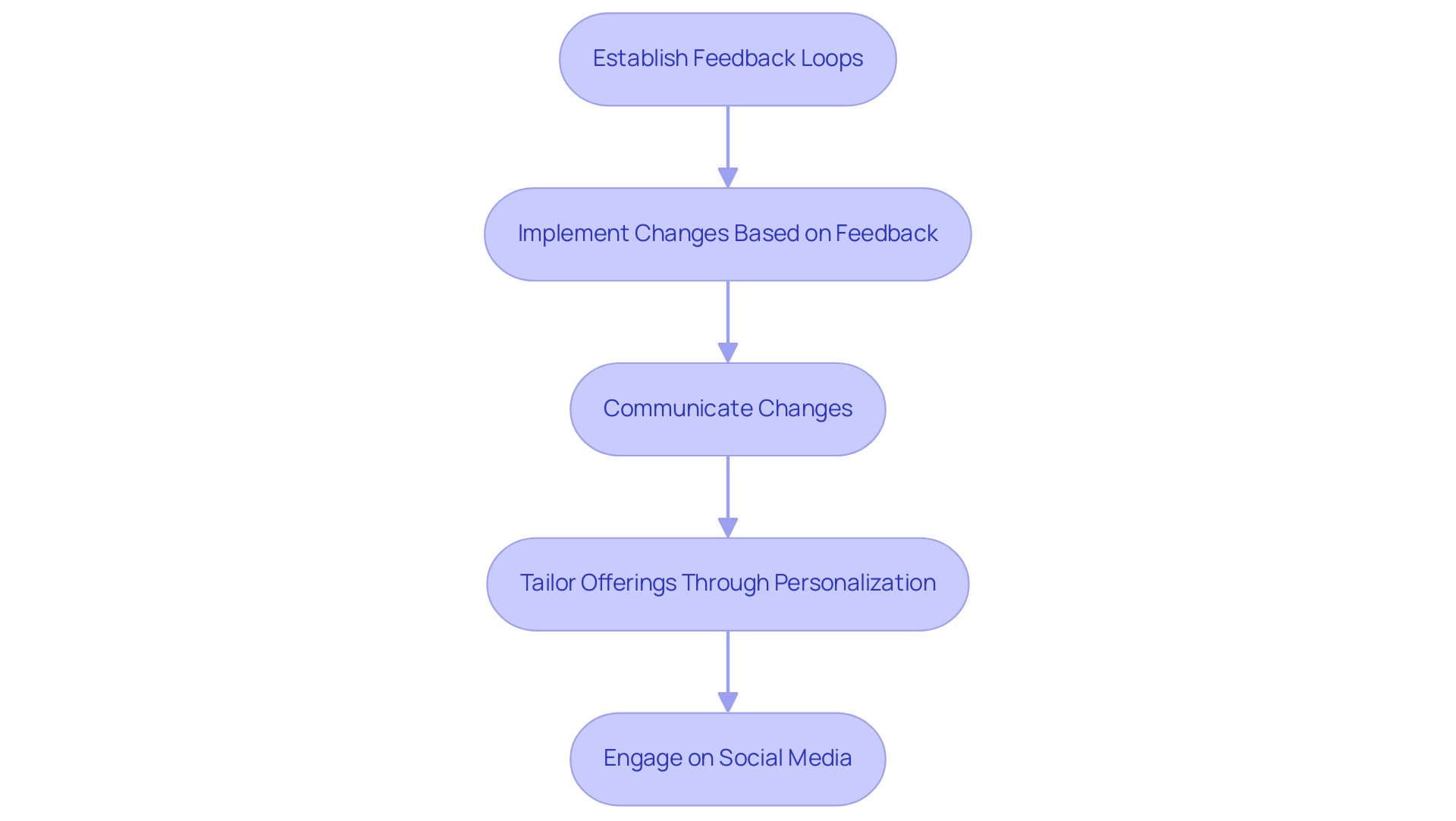
Personalization: The key to building strong customer relationships
Personalization is a vital part of nurturing strong relationships with your clients, and it plays a significant role in enhancing customer retention in today’s competitive marketplace. We understand that navigating this landscape can be challenging. To help you implement effective personalization, consider these supportive strategies:
- Segment your audience: Use data analytics to categorize your clients based on various factors such as demographics, behavioral patterns, and preferences. This approach allows for targeted and effective marketing initiatives, reflecting the growing trend in digital marketing.
- Tailor communications: Customize your emails, promotional offers, and content to resonate with the specific interests of each audience segment. Tailored communications not only enhance engagement but also foster a deeper connection with your clients.
- Utilize client data: Leverage the power of client data to anticipate their needs and preferences. This proactive engagement can help you address inquiries and desires before they even arise.
- Create personalized experiences: Design user journeys that reflect individual preferences. This might include personalized product recommendations or customized onboarding processes that cater specifically to each user’s needs.
- Engage through multiple channels: Ensure that these personalized experiences are seamless across all platforms — be it email, social media, or in-store interactions. A consistent brand voice strengthens loyalty and trust.
The impact of these personalized approaches can be remarkable; for instance, segmented campaigns have shown to yield a staggering 760% increase in email revenue. Andy Crestodina, co-founder of Orbit Media Studios, shares valuable insights:
Fill your content with visuals. Include lots of contributor quotes. Embed a few videos. Make it long and detailed. Inject a few strong opinions.
This advice underscores the importance of depth in engaging your audience.
Moreover, with 48% of marketers pursuing professional training outside their organization, continuous learning is essential for effectively implementing personalization strategies. Dashly’s case study exemplifies how these strategies not only optimize lead capture and nurturing but also enhance service through omnichannel communication and self-service options.
For example, Dashly‘s platform has demonstrated improved client engagement metrics, showcasing the effectiveness of personalization and segmentation strategies. By emphasizing personalization, you can significantly enhance customer retention, client loyalty, and overall satisfaction. Remember, you’re not alone in this journey — embracing these strategies can lead to meaningful connections with your clients.

Harnessing technology for effective customer retention
Technology plays a vital role in nurturing client retention, and there are several ways businesses can harness its potential to make a real difference.
- Embrace CRM systems: Adopting Relationship Management (CRM) software can feel like a game changer. It helps track interactions, preferences, and feedback, paving the way for personalized communication — a key ingredient for building client loyalty. Did you know that 83% of small and medium-sized enterprises (SMEs) find CRM systems effective in reaching their marketing goals? This is largely due to improved targeting and lead nurturing. In the real estate sector, companies often invest an average of $117 per user each month on CRM software, underscoring its value in enhancing client relationships.
- Engage with chatbots: Consider integrating AI-powered chatbots to provide instant support and engage clients 24/7. With Dashly, chatbots can autonomously handle up to 40% of user queries. This not only boosts client satisfaction but also allows your human agents to focus on more complex issues, enhancing retention rates.
- Utilize data analytics: Harnessing data analytics can empower your business to explore client data deeply, revealing trends, preferences, and potential churn risks. This proactive approach enables timely interventions and tailored engagement strategies, which are crucial for improving customer retention. Dashly’s analytics tools offer insights into service performance across all channels, helping support managers monitor metrics, set benchmarks, and identify areas for improvement.
- Automate your marketing campaigns: Marketing automation tools can send tailored messages and offers based on client behavior and preferences. This targeted communication not only fosters engagement but also strengthens relationships, increasing the likelihood of client loyalty.
- Integrate omnichannel support: Providing assistance across various platforms with Dashly ensures a seamless experience for clients, no matter how they choose to engage with your organization. Dashly’s shared inbox allows support teams to manage user queries from website chat, email, messengers, and social media all in one place, significantly enhancing overall satisfaction while preserving the context of interactions. Additionally, Dashly offers self-service options, including a knowledge base that users can access to find information and resolve issues independently, further lightening the load on support representatives.
By integrating these technological solutions, especially Dashly’s AI-driven tools, you can significantly enhance your customer retention efforts. This ultimately leads to greater loyalty and sustained growth for your business. As Simo Lemhandez highlights in ’10 best CRM solutions for event management in 2025,’ the landscape of CRM technology is evolving, and its importance in client engagement cannot be overstated.
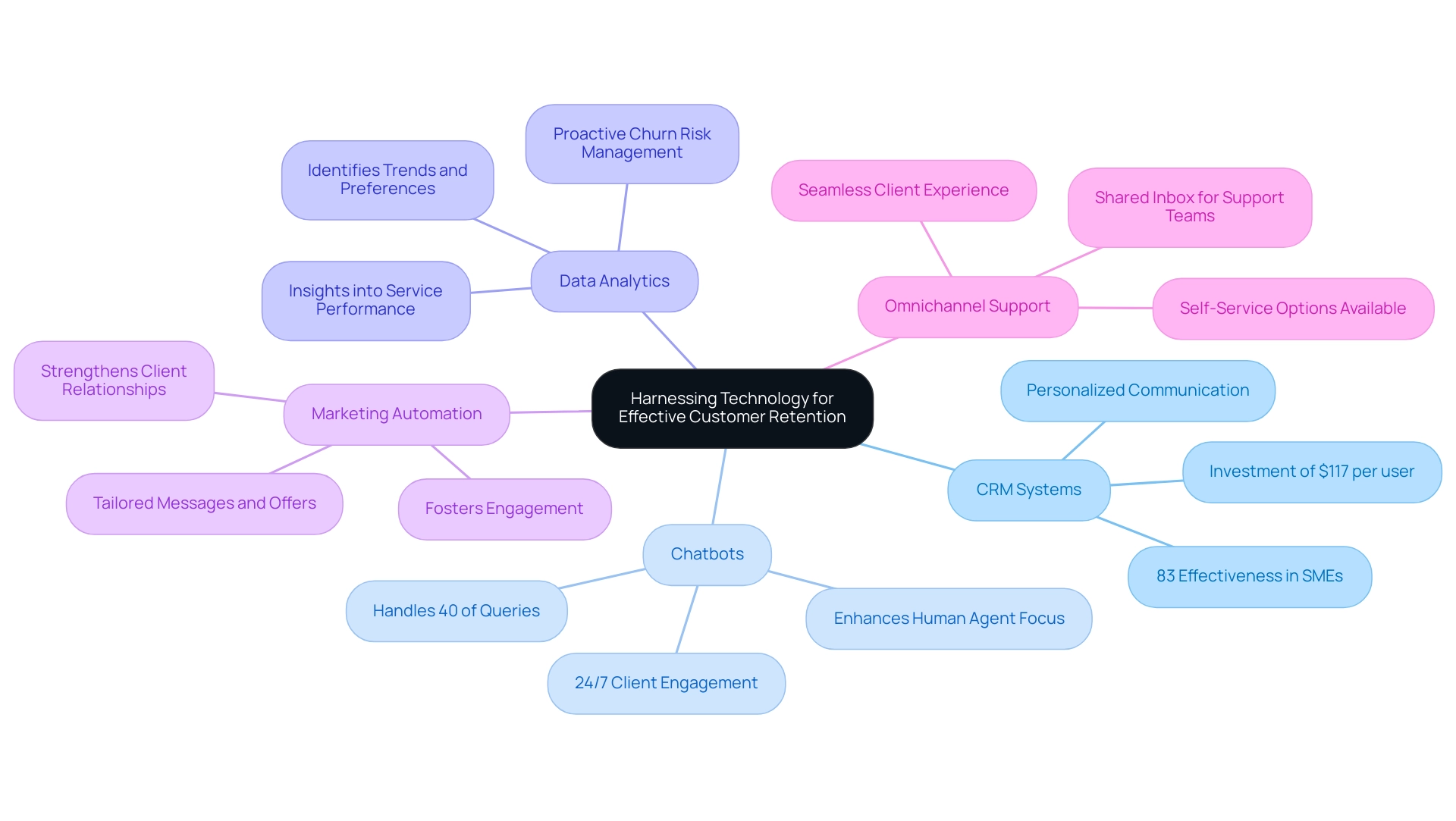
Improve customer retention with support tools from Dashly:
The long-term benefits of prioritizing customer retention
Focusing on client retention offers numerous long-term advantages that are crucial for your company’s success.
- Increased profitability: We understand that as a small business owner, every dollar counts. Retained clients often spend more over time, leading to higher profits. In fact, statistics show that companies prioritizing client loyalty can significantly enhance their profitability.
- Lower acquisition costs: Sustaining existing relationships is generally more cost-effective than acquiring new ones. This reduction in marketing expenses allows you to allocate resources more efficiently, maximizing your return on investment.
- Enhanced loyalty: Loyal clients don’t just stick around; they’re also more likely to refer others, creating a positive feedback loop that drives sustainable growth. Studies indicate that 74% of clients feel more committed when they feel acknowledged and understood by a brand. Moreover, brands that use gamification in their loyalty strategies see a 47% increase in engagement, showcasing innovative ways to improve customer retention.
- Enhanced brand reputation: Happy clients actively contribute to a positive brand image, attracting new clients through powerful word-of-mouth marketing. A strong reputation is vital for generating new opportunities. Additionally, client communities can help B2B companies increase satisfaction by 46%, highlighting the importance of community engagement.
- Sustainable growth: A strong and devoted clientele ensures a stable revenue stream, allowing for more predictable planning and growth trajectories. This stability is essential for long-term success in an ever-evolving market. To evaluate loyalty performance, consider computing your Client Loyalty Rate (CLR), which measures the percentage of clients retained over a specific duration, providing valuable insights into areas for improvement.
As Dumpy Sharma aptly puts it,
True loyalty flourishes on shared experiences and meaningful connections.
This insight reinforces the importance of cultivating relationships that go beyond mere transactions, highlighting the long-term benefits of strategies that enhance customer retention.
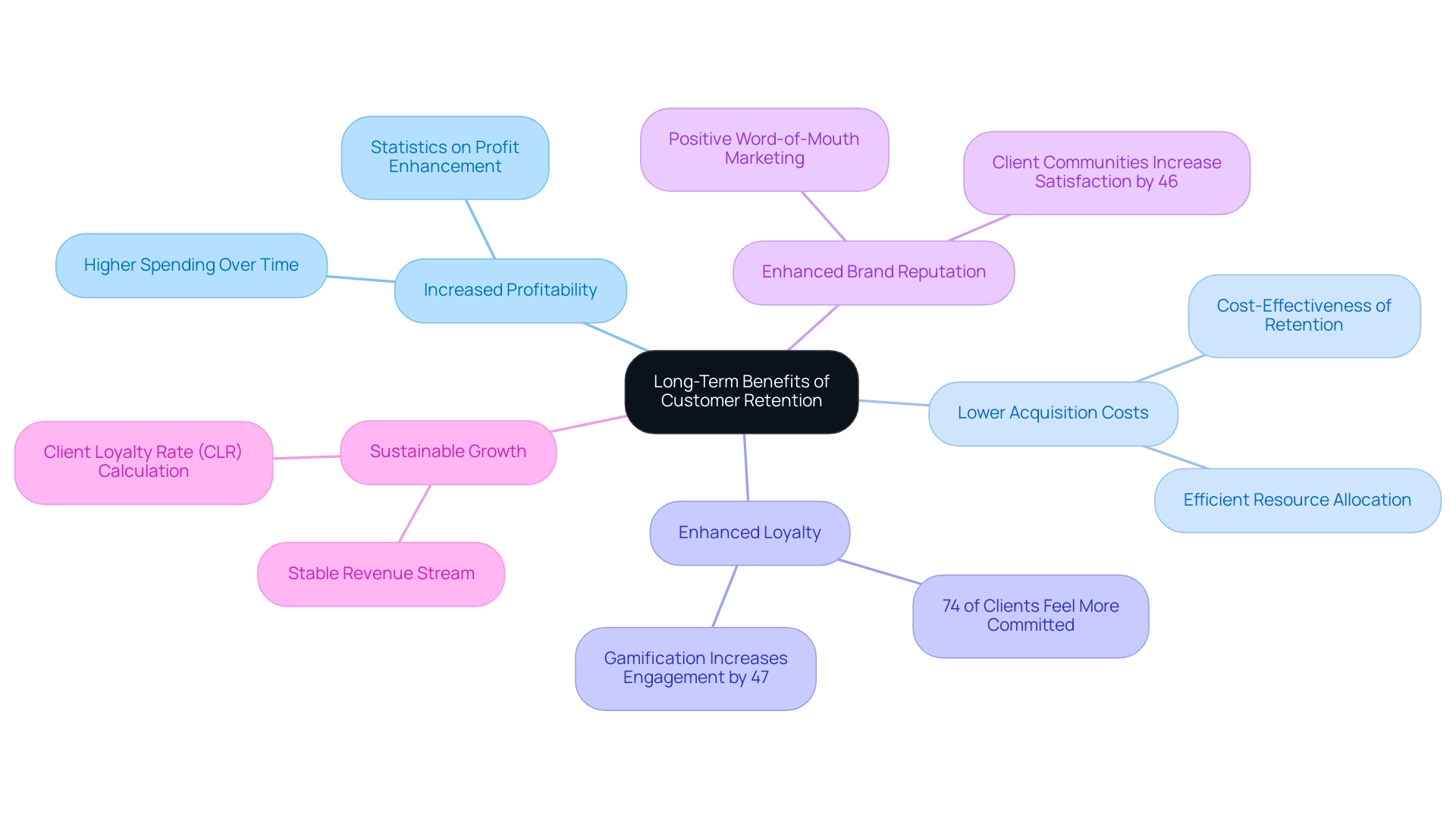
Conclusion
Prioritizing customer retention isn’t just a strategic choice; it’s a cornerstone for sustainable business success. We understand that as a small business owner, you face daily challenges, and this article sheds light on the multifaceted nature of customer retention. It plays a critical role in boosting profitability, cutting acquisition costs, and nurturing brand loyalty. Research shows that even a slight increase in retention can lead to significant profit gains, giving you compelling reasons to invest in strong retention strategies.
Implementing effective strategies like:
- Personalized communication
- Loyalty programs
- Exceptional customer service
can truly transform your relationship with customers. By leveraging technology and analytics, you can gain deeper insights into customer behavior, allowing you to respond proactively to their needs. Don’t underestimate the power of gathering and acting on customer feedback; it cultivates a culture of collaboration and continuous improvement that resonates with your consumers.
The long-term benefits of prioritizing customer retention extend well beyond immediate financial gains. They include an improved brand reputation, stronger customer loyalty, and a stable revenue stream that supports sustainable growth. As you build meaningful connections with your customers, you’re laying the groundwork for a loyal base that drives future success. Embracing these strategies will not only strengthen your customer relationships but also position your business favorably in an increasingly competitive marketplace.





![Ready-made answers to 4 most tricky customer queries [Infographics]](https://www.dashly.io/blog/wp-content/uploads/2020/10/15-Examples-of-Tricky-Customer-Service-Scenarios-Ready-Made-Answers-720x317.jpg)


